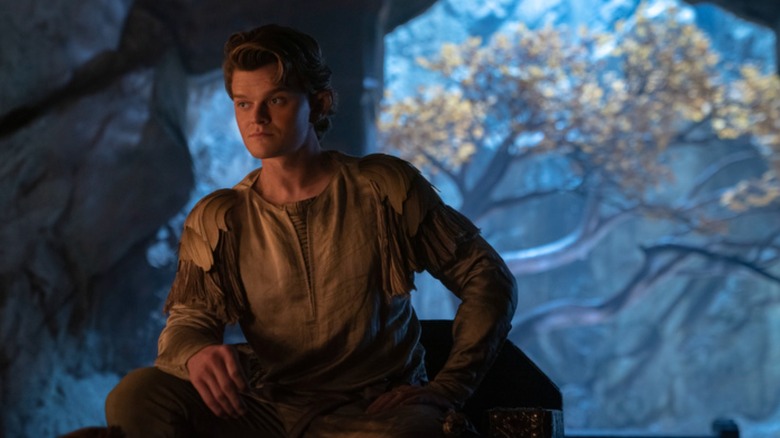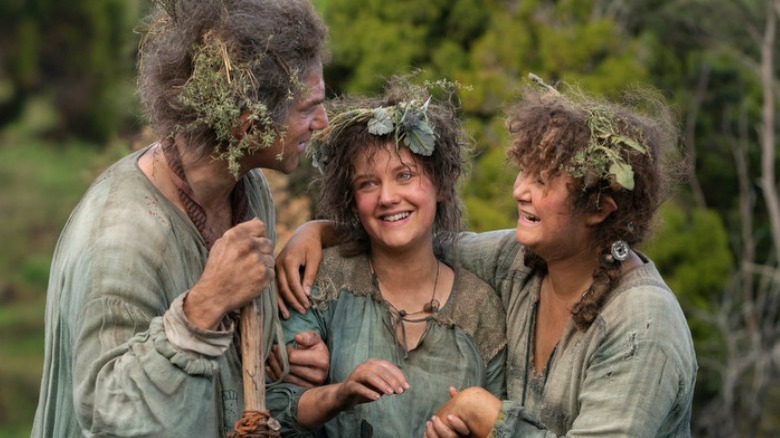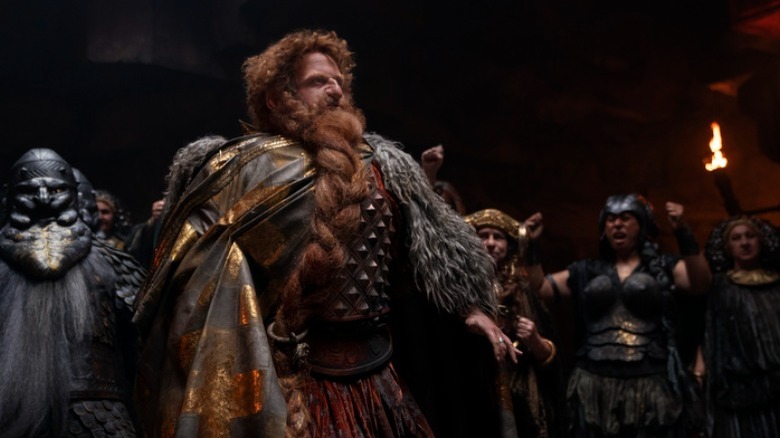Getting Character Height Right In The Lord Of The Rings: The Rings Of Power Took Every Trick In The Book [Exclusive]
When "The Lord of the Rings: The Rings of Power" debuts on Prime Video next month, it'll mark a milestone in television history, reportedly becoming the most expensive show ever made. With a budget as massive as the one it's working with, the prequel series will be expected to look pretty much flawless to appease wary fans of Peter Jackson's films. That means no wonky CGI, no bad wigs (here's looking at you, "House of the Dragon"), and no distracting continuity errors — like unrealistic height differences.
Luckily, according to the cast of the series, that last one seems to be pretty much covered. In an upcoming interview for /Film, Jeremy Mathai spoke with actors Owain Arthur, Sophia Nomvete, and Robert Aramayo and asked them about the on-set strategies employed to make elves, dwarves, and other creatures look just right on the screen. Given that the elves in the cinematic versions of J.R.R. Tolkein's texts have always been tall and willowy, while the dwarves have been short and squat, the team behind "The Rings of Power" had to use some movie magic. The actors confirmed that doubles and forced perspective shots were both used to create character-accurate heights.
The show made sure to keep actors face-to-face
According to Aramayo, who plays a young Elrond in the new series, the crew of "The Rings of Power" did everything possible to ensure that the elves, dwarves, Harfoots, and humans all looked just right. They also, importantly, made sure to find practical solutions that could keep the cast performing with one another instead of in a lifeless CGI setup. "What was great about the scale team was that they only really used it when they absolutely had to," Aramayo said of, in Mathai's words, the "cinematic sleight of hand" used in the show. "The technical aspect of it, the particular camera that we used, was for moments when we had to have it, as opposed to shooting entire scenes with tennis balls and not looking at Sophia or Owain's face."
Though not all productions are forthright about how much of what we see is CGI, it's often easy to tell when cast members aren't actually acting opposite one another. Marvel especially has recently been scrutinized for what some see as visually shoddy CGI in titles like "Thor: Love & Thunder" and "She-Hulk: Attorney At Law." The feedback culminated in a Vulture report that found that the special effects artists report being underpaid, overworked, and even working without the guidance of a director of photography in post-production. The result of sub-par CGI is a viewing experience that makes it hard to suspend your disbelief, a problem a series as immersive as this one surely wants to avoid at all costs.
A big budget doesn't have to equal excess CGI
In contrast, it sounds like shots in "The Rings of Power" were meticulously planned ahead of time. "[The technical tricks] would be for moments, and they would be very clear about what those moments were," Aramayo says. "And if they could have Soph and Owain on stools and me on a ladder, they would do that in order for us to be able to still do the scene with each other." The actor notes that the integrity of the face-to-face performance is "the thing that we most wanted to protect," and Arthur, who plays dwarf Durin IV in the show, added that the crew was "just very accommodating to get the best out of us."
It'll be up to audiences to decide whether or not to embrace the totally new Middle Earth story when "The Rings of Power" debuts next month. Still, it's undoubtedly a good sign that the team behind the series apparently realizes that just because you have the money for CGI, that doesn't mean you should use it in every single shot. No matter how much special effects continue to advance, there will always be something to be said for authentic performances from actors whose work is grounded in a face-to-face set experience.
"Lord of the Rings: The Rings of Power" premieres on Prime Video on September 2, 2022.


